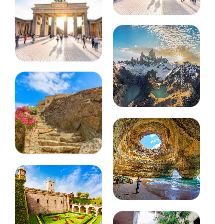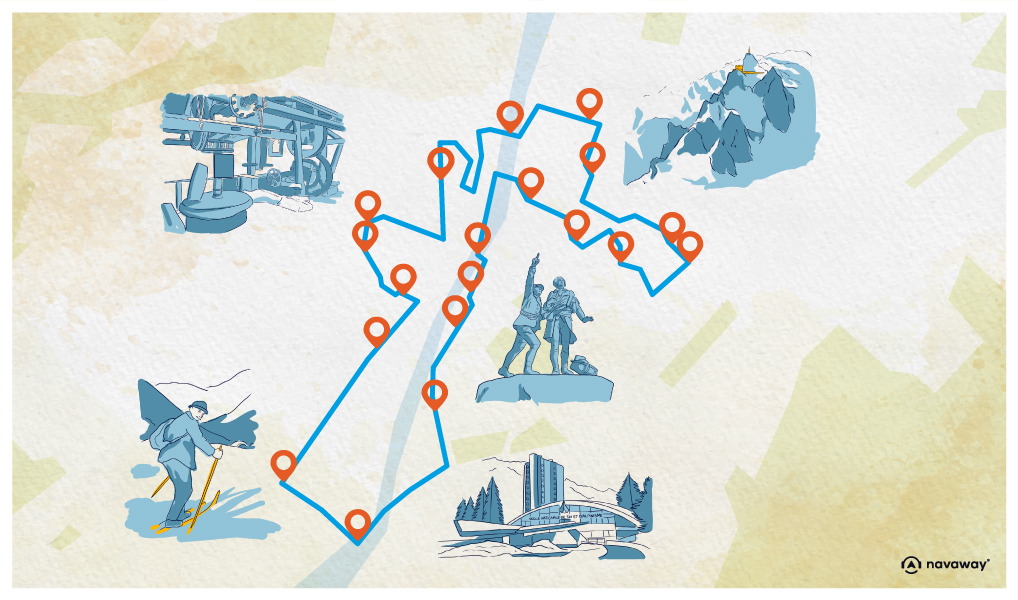
France’s 10 most beautiful mountains to discover
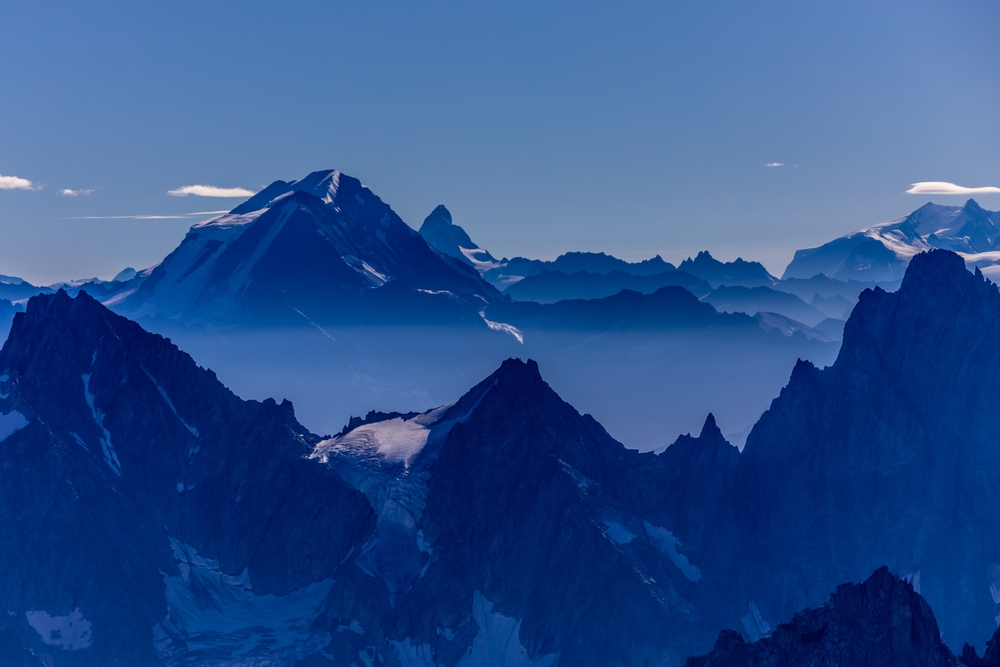
France boasts some of the most beautiful peaks in Europe, offering spectacular panoramas and unforgettable experiences for mountain lovers. From the majestic Alps to the wild Pyrenees, via the volcanoes of Auvergne, these giants of stone fascinate hikers, climbers and contemplators alike. Here is our selection of the 10 most beautiful mountains in France that are absolutely worth a visit.

Also in the Chamonix guide :
- 10 must-do activities in Chamonix
- Top 10 best hotels to stay in Chamonix
- Hiking in Haute-Savoie: 12 of the most beautiful mountain trails
- Mountain gastronomy
- The 10 highest peaks in the world
- The 16 most beautiful lakes in the Pyrenees
- The most beautiful villages to visit in the Hautes-Alpes
- 11 must-see spots for mountain biking in France
1. Mont Blanc, the roof of Western Europe
At 4,805.59 metres, Mont Blanc reigns supreme over the Alps and is the highest peak in Western Europe. This mythical mountain, located between France and Italy, embodies the very essence of the high mountains. Its snow-covered summit, visible from Chamonix, attracts thousands of climbers from all over the world every year, who dream of setting foot on its summit.
The Mont-Blanc massif offers much more than a simple ascent. Hikers can take the famous Tour du Mont-Blanc, a trek lasting several days and crossing three countries. The surrounding ski resorts, such as Chamonix and Saint-Gervais, allow you to discover this white giant from every angle. In summer, the hiking trails reveal unspoilt nature, while in winter, the snow-covered slopes are a skier’s paradise.
If you want to discover the fascinating world of Mont Blanc and its surroundings, a visit to Chamonix is an excellent place to start. The town offers numerous activities and exceptional views of this giant of the Alps.
2. The Aiguille du Midi, the terrace of the Alps
Perched 3,842 metres above Chamonix, the Aiguille du Midi offers one of the most spectacular views in the French Alps. Accessible by cable car from Chamonix town centre, the summit takes less than 20 minutes to reach a breathtaking panorama of Mont Blanc, the glaciers and the surrounding peaks.
The panoramic terrace at the top offers a breathtaking 360-degree view. The more adventurous can venture into the “Pas dans le Vide”, a glass cage suspended more than 1,000 metres above the void. From up there, the Mont-Blanc massif is revealed in all its majesty, with its sharp needles and sparkling glaciers. It’s also the starting point for the famous Vallée Blanche, one of the finest off-piste ski descents in Europe.
3. The Pic du Midi de Bigorre and its legendary observatory
Rising to an altitude of 2,877 metres in the Hautes-Pyrénées, the Pic du Midi de Bigorre is much more than just a summit. It is an exceptional scientific site, home to one of the most prestigious astronomical observatories in Europe. Since 1873, researchers have been studying the stars here, taking advantage of exceptionally clear skies and virtually no light pollution.
Accessible by cable car from La Mongie station, the Pic du Midi offers a unique experience combining science, nature and exceptional panoramic views. At the summit, visitors can discover the highest planetarium in Europe, visit the observation domes and admire a breathtaking panorama of the entire Pyrenees mountain range. The lucky ones can even spend a night at the summit to observe the stars in optimum conditions. The site has been awarded the “Grand Site Occitanie” label and offers an uninterrupted view of more than 300 kilometres of Pyrenean peaks.
4. The Cirque de Gavarnie, a UNESCO-listed natural wonder
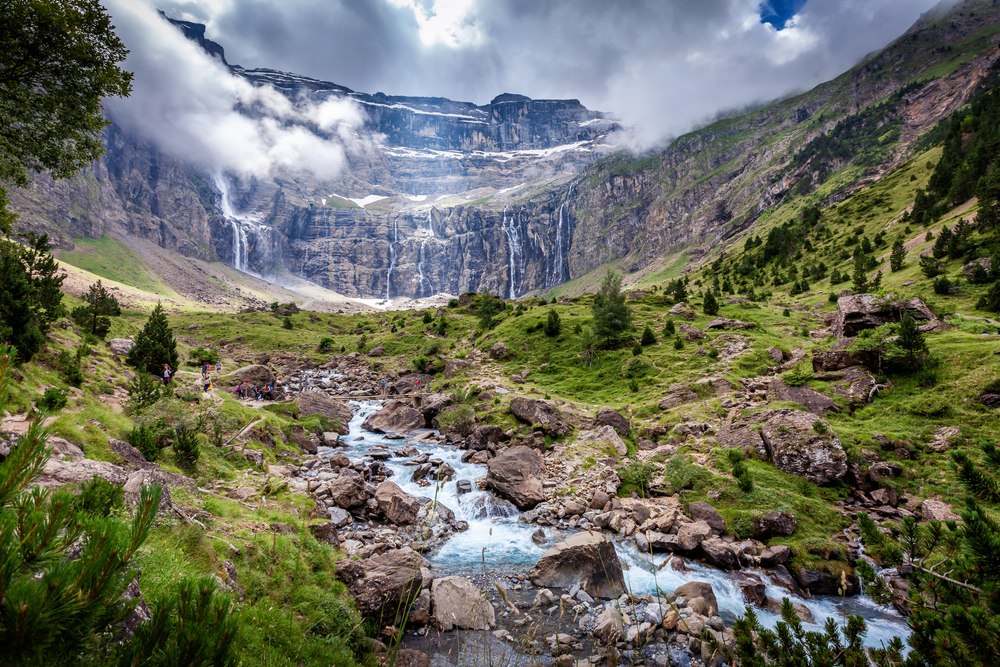
The Cirque de Gavarnie is one of Europe’s most impressive natural formations. Located in the Hautes-Pyrénées, this original glacial cirque bears witness to the powerful geological forces that have shaped our mountains. Its limestone walls rise to a height of almost 1,500 metres, forming a natural amphitheatre of striking beauty.
Listed as a UNESCO World Heritage Site since 1997 as part of the “Pyrenees – Mont Perdu” ensemble, the Gavarnie cirque is home to Europe’s highest waterfall at 427 metres. The approach hike, accessible to all, takes around 3 hours round trip from the village of Gavarnie to the foot of the cirque. The path crosses lush green pastures grazed by horses and cows, before gradually revealing the majesty of the cliffs and the great waterfall. In winter, the site is transformed into a magical setting where the waterfall partially freezes, creating monumental ice sculptures.
5. The Barre des Écrins, the Dauphiné giant
The highest point in the Écrins and Hautes-Alpes mountain ranges, the Barre des Écrins rises to an altitude of 4,102 metres. It is the most southerly of the Alpine peaks topping 4,000 metres, making it an iconic mountain for mountaineers. Situated in the heart of the Ecrins National Park, it dominates a wild and unspoilt landscape of exceptional beauty.
Climbing the Barre des Écrins is a major objective for experienced mountaineers. It is usually approached from the Pré de Madame Carle, via the Glacier Blanc refuge and then the refuge des Écrins. From the summit, the panorama stretches across the whole of the Southern Alps, offering spectacular views of glaciers, sharp ridges and deep valleys. The Écrins massif stands out for its wild, unspoilt character, far removed from the tourist hustle and bustle of some Alpine massifs.
6. Mont Ventoux, the giant of Provence
Nicknamed the “Giant of Provence” or “Mont Chauve” because of its bare summit, Mont Ventoux rises to an altitude of 1,910 metres in the Vaucluse. This isolated summit dominates Provence, offering exceptional views of the Alps, the Mediterranean and the Rhône valley on a clear day.
Mont Ventoux is world-famous for being a legendary stage in the Tour de France cycle race. Its steep slopes and strong winds make it a formidable challenge for cyclists from all over the world. But the Ventoux can also be explored on foot, with numerous hiking trails leading to the summit. In winter, there are even two small ski resorts where you can hurtle down its slopes. The lunar summit, swept by the mistral wind, offers a unique atmosphere where Mediterranean vegetation gives way to a mineral desert as you climb higher.
7. The Pic du Canigou, the sacred mountain of the Catalans
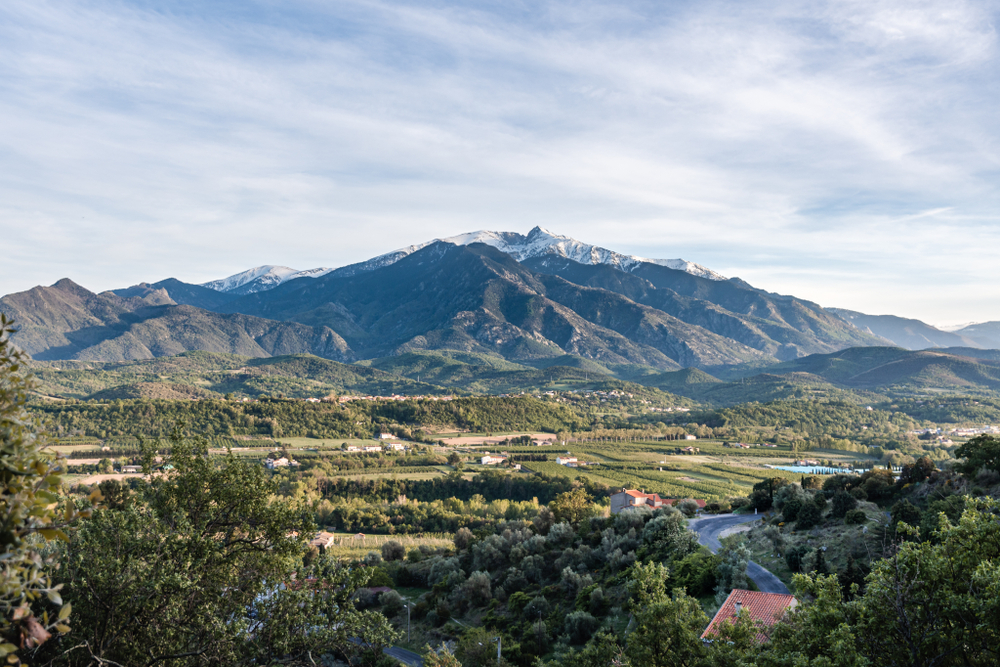
Reaching an altitude of 2,784 metres in the Pyrénées-Orientales, the Pic du Canigou is much more than just a mountain: it is a powerful symbol of identity for the Catalans. Visible from Barcelona on a clear day all the way to the plains of Roussillon, this emblematic peak occupies a special place in the heart and culture of Catalonia.
Canigou is surrounded by many legends, including that of the seven giants who attempted to build a stairway to heaven in defiance of the gods. Every year, the tradition of the Flame du Canigou perpetuates the mystical link between this peak and the Catalan people. Canigou can be climbed in a day on several routes, the most popular of which starts at Les Cortalets. Hikers are rewarded with exceptional views of the Mediterranean, the Pyrenees and the Roussillon plain. In summer, you can spend the night at the Cortalets refuge or the Mariailles refuge to make the most of this magical site.
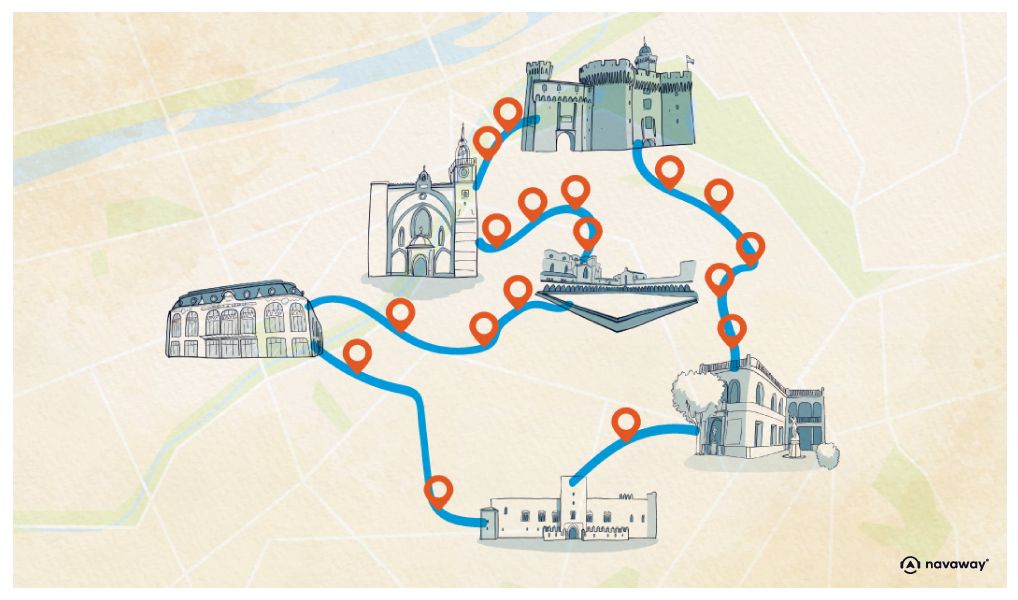
8. Puy Mary, the heart of Europe’s largest volcano
Located in the heart of the Massif Central in the Cantal region, Puy Mary rises to an altitude of 1,783 metres. This pyramid-shaped summit is actually the remnant of Europe’s largest stratovolcano, which was 70 kilometres in diameter several million years ago. Today, Puy Mary offers a unique volcanic landscape, and has been awarded the Grand Site de France label.
From the summit of Puy Mary, accessible after a short 30-minute climb from the Pas de Peyrol pass, the 360-degree panorama reveals the seven glacial valleys that radiate out from the volcano in a star shape. This landscape, unique in France, is a spectacular testimony to the geological history of the Massif Central. The green valleys, rounded puys and jagged ridges create a setting of wild, unspoilt beauty. The site is ideal for hiking, with numerous trails enabling you to explore the various valleys and discover the wealth of Auvergne flora and fauna.
9. The Grandes Jorasses, the mythical north face
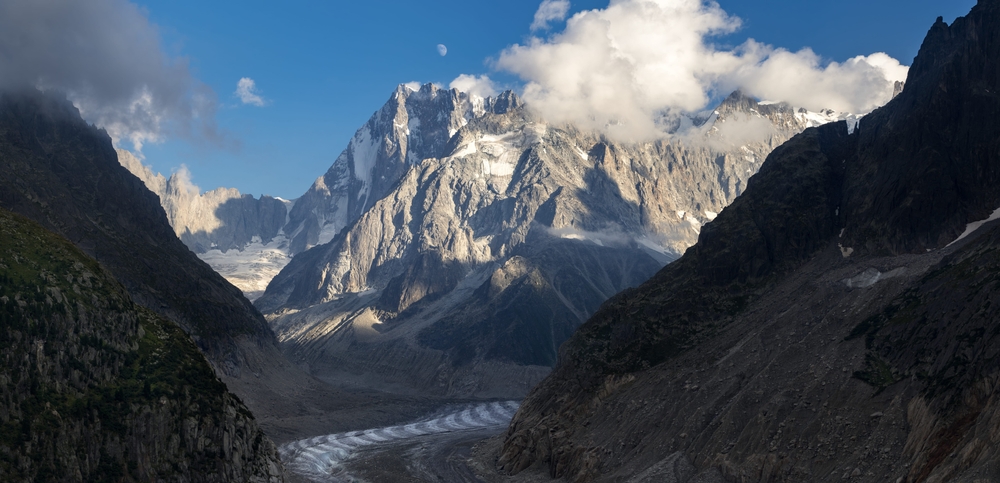
The Grandes Jorasses is one of the most impressive peaks in the Mont Blanc massif, with its highest point, Pointe Walker, rising to 4,208 metres. The mountain is most famous for its breathtaking north face, considered to be one of the three great north faces of the Alps, along with the Matterhorn and the Eiger.
The North Face of the Grandes Jorasses represents a major challenge for the most experienced mountaineers in the world. Over 1,000 metres high, it has been the scene of many historic firsts and remains today an adventure terrain demanding technique, courage and endurance. For non-Alpinists, the Grandes Jorasses can be admired from the Leschaux refuge or from the heights of Courmayeur in Italy. The jagged silhouette of its various peaks stands out majestically against the sky and bears witness to the power and raw beauty of the high mountains.
10. The Hohneck, sentinel of the Vosges mountains
At 1,363 metres, the Hohneck is the third highest peak in the Vosges massif and the highest point in the Haut-Rhin département. Situated on the border ridge between Alsace and Lorraine, this emblematic summit offers an exceptional panorama of both sides of the Vosges massif.
The Hohneck stands out for its accessibility and the diversity of its landscapes. In winter, the ski resort of La Bresse-Hohneck welcomes winter sports enthusiasts in a family-friendly atmosphere. In summer, hikers can explore the many footpaths that criss-cross the hautes-chaumes, the high-altitude pastures typical of the Vosges. The Schiessrothried lake below is a refreshing stop-off on hot summer days. On a clear day, the view from the summit stretches as far as the Swiss Alps, offering a magnificent spectacle that rewards the effort of the climb.
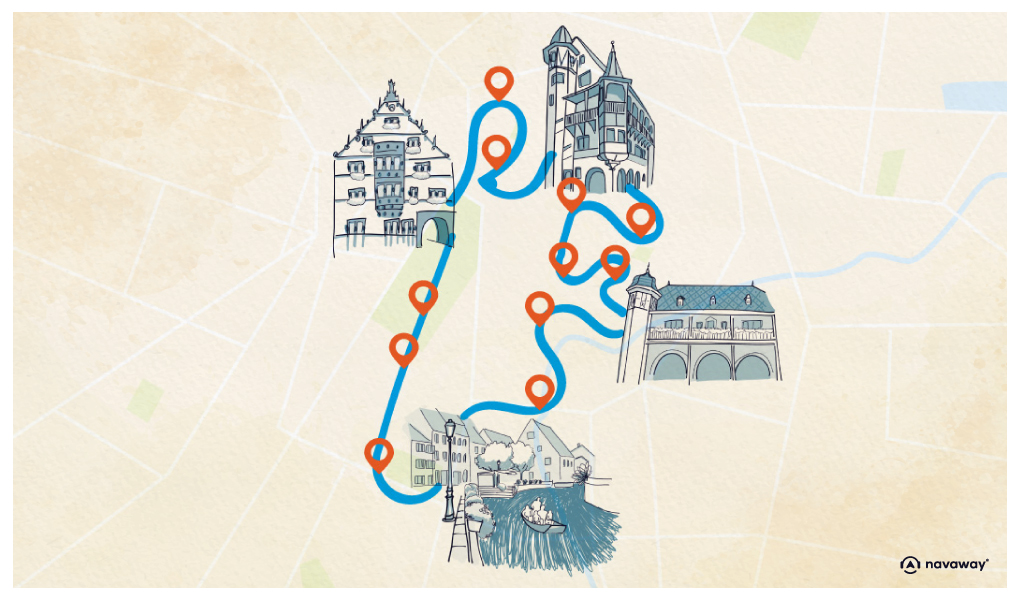
In conclusion, France’s most beautiful mountains offer an incomparable diversity of landscapes and experiences, from the icy peaks of the Alps to the dormant volcanoes of the Auvergne, via the giants of the Pyrenees and the ridges of the Vosges. Whether you’re an experienced mountaineer, a keen hiker or just a lover of beautiful scenery, these emblematic mountains promise you unforgettable moments in the heart of a preserved and majestic natural environment. Each of them tells a unique geological story, bears ancestral legends and offers breathtaking panoramas that are a reminder of the beauty and power of our natural mountain heritage.
Frequently asked questions about France’s most beautiful mountains
What is the highest mountain in France?
At 4,805.59 metres, Mont Blanc is the highest mountain in France and Western Europe. This legendary peak, located in the Mont Blanc massif between France and Italy, attracts thousands of climbers and visitors every year.
Which mountains are the easiest for families to visit?
There are a number of mountain peaks within easy reach for families: Puy Mary, which takes just 30 minutes to climb; the Pic du Midi, accessible by cable car; the Aiguille du Midi, also accessible by cable car; and Mont Ventoux, which has trails suitable for families with children.
What’s the best time of year to explore the French mountains?
The best season depends on your activities: summer (June to September) is ideal for hiking, with clear paths and generally stable weather. Winter (December to March) is ideal for winter sports. Spring and autumn offer spectacular scenery with fewer tourists.
Do you have to be a mountaineer to visit these mountains?
No, many of these mountains are accessible without any mountaineering experience. The Pic du Midi and the Aiguille du Midi can be reached by cable car, the Cirque de Gavarnie is an easy hike, and the Puy Mary is a short, accessible climb. Climbing Mont Blanc, the Barre des Écrins or the Grandes Jorasses, on the other hand, requires mountaineering experience and the support of a professional guide.
Where are France’s most beautiful mountains?
France’s most beautiful mountains are to be found mainly in the Alps (Mont Blanc, Aiguille du Midi, Barre des Écrins, Grandes Jorasses), the Pyrenees (Pic du Midi, Cirque de Gavarnie, Pic du Canigou), the Massif Central (Puy Mary), the Vosges (Hohneck) and Provence (Mont Ventoux).
200 audioguided tours for cities all around the world
Download